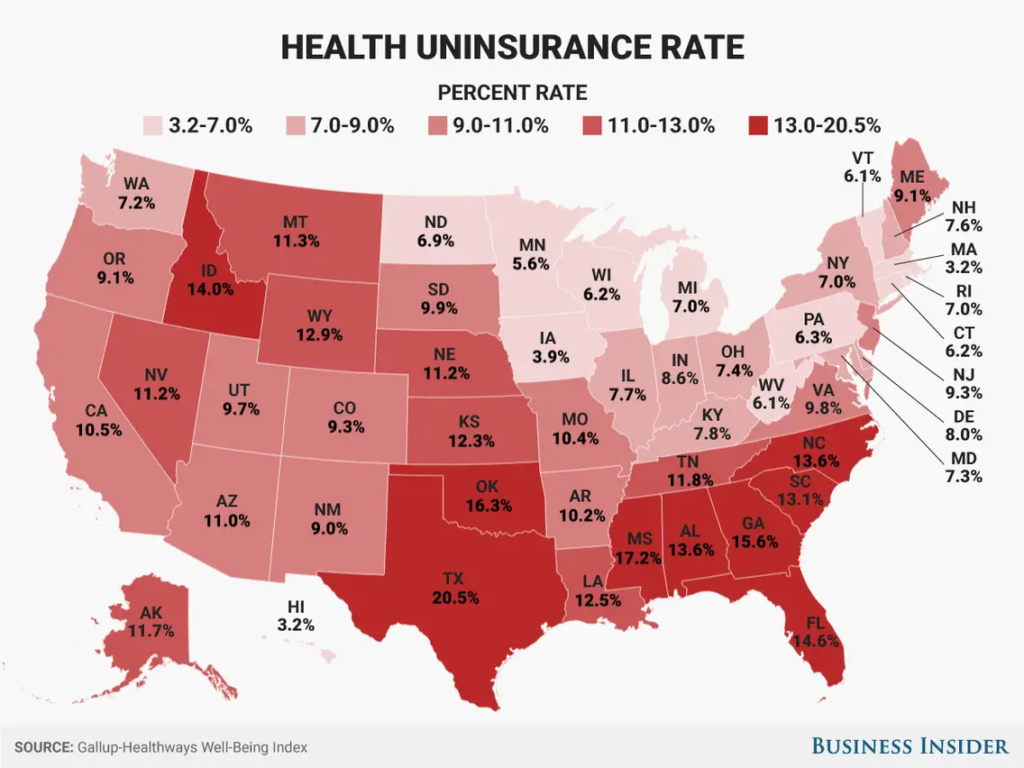Understanding how health providers are reimbursed is crucial for both healthcare professionals and patients. Reimbursement mechanisms determine how healthcare services are paid for, which impacts the quality and accessibility of care.
Healthcare providers need to comprehend reimbursement methods to navigate the complex healthcare system effectively. This knowledge helps them optimize revenue, manage costs, and provide the best care possible. For patients, understanding reimbursement ensures they can make informed decisions about their healthcare options, including which providers to see and what services are covered by their insurance.
Table of Contents
Types of Health Providers
Healthcare providers encompass a diverse range of professionals and organizations dedicated to delivering medical services. Physicians, who can specialize in areas such as internal medicine, pediatrics, surgery, or psychiatry, often serve as primary care providers or specialists. Nurses play a critical role in patient care, providing direct medical care, administering medications, and educating patients about their health. Pharmacists ensure the safe and effective use of medications, offering expertise in drug interactions and dosage.
Allied health professionals, including physical therapists, occupational therapists, speech therapists, and dietitians, contribute specialized skills to patient care, focusing on rehabilitation, functional improvement, communication, and nutrition, respectively. Mental health providers such as psychologists, psychiatrists, and counselors address the psychological and emotional aspects of health, offering therapy, counseling, and psychiatric medication management.
Healthcare facilities range from hospitals, which provide acute care services and house various medical specialties, to clinics, urgent care centers, and outpatient surgery centers, which offer more focused and specialized care. Nursing homes, assisted living facilities, and rehabilitation centers cater to patients requiring long-term care, rehabilitation, or assistance with activities of daily living.
Fee-for-Service (FFS) Reimbursement
Fee-for-Service (FFS) reimbursement is a payment model in healthcare where providers receive payment for each service they deliver to a patient. In this system, healthcare services are unbundled, and providers are reimbursed based on the quantity and complexity of the services rendered. Each service, such as an office visit, diagnostic test, or procedure, is assigned a specific fee, which can vary based on factors like location, provider specialty, and insurance coverage.
One of the primary advantages of FFS reimbursement is that it incentivizes providers to deliver more services, as each service performed translates directly into revenue. However, this can also lead to overutilization of services and potentially unnecessary care. Additionally, FFS reimbursement does not necessarily incentivize quality or outcomes, as providers are paid regardless of the effectiveness or value of the services delivered.
Despite its drawbacks, FFS reimbursement remains a common payment model in healthcare, particularly in certain specialties and settings. However, there is growing interest in alternative payment models that prioritize value, such as bundled payments and value-based reimbursement, as a means to promote cost-effective, high-quality care.
Capitation Reimbursement
Capitation reimbursement is a payment model in healthcare where providers receive a fixed amount of money per patient enrolled in a specific plan or program, regardless of the quantity or complexity of services provided. In this system, the healthcare provider is paid a predetermined per-member-per-month (PMPM) fee by an insurer or healthcare organization to cover the cost of care for each patient under their care.
One of the key advantages of capitation reimbursement is its potential to incentivize providers to deliver cost-effective care and focus on preventive measures and population health management. Providers have a financial incentive to keep patients healthy and avoid unnecessary treatments or procedures, as they bear the financial risk for the cost of care.
However, capitation reimbursement also presents challenges, such as the potential for providers to underutilize services or withhold necessary care to control costs. Additionally, there may be concerns about equitable distribution of resources, particularly for patients with complex medical needs who require more intensive and costly care.
Despite these challenges, capitation reimbursement is widely used in various healthcare settings, including managed care organizations, accountable care organizations (ACOs), and some primary care practices. It is often seen as a way to align incentives between payers and providers and promote efficient, coordinated care.
Bundled Payment Reimbursement
Bundled payment reimbursement is a payment model in healthcare where providers receive a single payment for all services related to a particular episode of care or medical condition. Instead of paying for each individual service separately, such as tests, procedures, and hospital stays, payers issue one bundled payment to cover the entire continuum of care associated with a specific treatment or procedure.
This payment model encourages collaboration and coordination among healthcare providers involved in a patient’s care, as they share in the financial responsibility for delivering high-quality, cost-effective services. By bundling payments, providers have an incentive to streamline care delivery, reduce unnecessary services, and improve care coordination to optimize outcomes while controlling costs.
Bundled payment reimbursement can be structured in various ways, including retrospective or prospective payment arrangements, and may cover different timeframes, such as an entire episode of care or a specific period post-procedure. Common examples of bundled payment initiatives include joint replacement surgeries, cardiac procedures, and maternity care.
While bundled payment reimbursement offers potential benefits in terms of efficiency, quality, and cost savings, successful implementation requires robust data analytics, care coordination infrastructure, and clear communication among stakeholders. Additionally, providers may need to adapt their care delivery processes and workflows to effectively manage bundled payments and ensure optimal patient outcomes.
Value-Based Reimbursement
Value-based reimbursement is a payment model in healthcare that ties payments to the quality and effectiveness of care delivered, rather than solely focusing on the quantity of services provided. In value-based reimbursement, healthcare providers are rewarded for achieving specific healthcare outcomes or meeting certain performance metrics, such as improved patient health outcomes, patient satisfaction, and cost savings.
This payment model incentivizes healthcare providers to deliver high-quality, efficient care that prioritizes patient outcomes and satisfaction. Providers may receive financial incentives, such as bonuses or shared savings, for meeting or exceeding performance targets, while penalties may be imposed for failing to meet quality benchmarks.
Value-based reimbursement can take various forms, including pay-for-performance programs, accountable care organizations (ACOs), and bundled payment arrangements. These models aim to align incentives between payers and providers, promote care coordination, and encourage the adoption of evidence-based practices and innovative care delivery models.
Government Reimbursement Programs
Government reimbursement programs play a crucial role in financing healthcare services and ensuring access to care for millions of individuals. These programs are administered by government agencies and provide financial assistance to eligible beneficiaries, including vulnerable populations and individuals with specific healthcare needs.
Medicare
Medicare is a federal health insurance program primarily for individuals aged 65 and older, as well as certain younger people with disabilities and those with end-stage renal disease. It consists of several parts:
- Medicare Part A covers hospital stays, skilled nursing facility care, hospice care, and some home health services.
- Medicare Part B covers outpatient services, physician visits, preventive care, and durable medical equipment.
- Medicare Part C, also known as Medicare Advantage, offers private health plan options that combine Parts A and B benefits.
- Medicare Part D provides prescription drug coverage.
Medicaid
Medicaid is a joint federal and state program that provides health coverage to low-income individuals and families, including children, pregnant women, elderly adults, and people with disabilities. Each state administers its Medicaid program, following federal guidelines, and determines eligibility criteria and covered services.
Children’s Health Insurance Program (CHIP)
CHIP is a federal-state partnership that provides health coverage to uninsured children in families with incomes above Medicaid eligibility thresholds but who cannot afford private insurance. It offers comprehensive benefits tailored to children’s needs, including doctor visits, immunizations, dental care, and vision care.
Veterans Health Administration (VHA)
The VHA is the largest integrated healthcare system in the United States, providing comprehensive medical services to eligible veterans. Veterans enrolled in the VHA receive a wide range of healthcare services, including primary care, specialty care, mental health services, and long-term care, through VA medical centers, clinics, and community-based outpatient facilities.
Indian Health Service (IHS)
The IHS is a federal agency responsible for providing healthcare services to American Indians and Alaska Natives. It operates a network of hospitals, clinics, and health centers that offer a range of medical, dental, and behavioral health services to eligible individuals.
Private Insurance Reimbursement
Private insurance reimbursement refers to the process by which private health insurance companies pay healthcare providers for the services they deliver to covered individuals. Unlike government reimbursement programs like Medicare and Medicaid, which are funded by taxpayer dollars and have specific eligibility criteria, private insurance plans are typically purchased by individuals or provided by employers as part of employee benefits packages.
Coverage and Benefits
Private insurance plans vary in terms of coverage and benefits offered. They may include coverage for hospital stays, outpatient services, prescription drugs, preventive care, and other medical expenses. The scope of coverage and the out-of-pocket costs for individuals depend on the specific plan and the level of coverage chosen.
Provider Networks
Private insurance plans often have networks of preferred providers, including hospitals, physicians, specialists, and other healthcare professionals. In-network providers have agreements with the insurance company to accept negotiated reimbursement rates for covered services, which may result in lower out-of-pocket costs for patients. Out-of-network providers may also be covered but typically result in higher costs for patients.
Reimbursement Methods
Private insurance reimbursement can take various forms, including fee-for-service, capitation, and value-based payment arrangements. Fee-for-service reimbursement involves paying providers a predetermined fee for each service rendered, while capitation involves paying providers a fixed amount per member per month regardless of the services provided. Value-based reimbursement ties payments to the quality and effectiveness of care delivered.
Claims Processing
Healthcare providers submit claims to private insurance companies for services rendered to covered individuals. Insurance companies review these claims to ensure they meet coverage criteria and are billed accurately according to the provider’s contracted reimbursement rates. Once approved, the insurance company reimburses the provider for the covered services, either directly or through a third-party administrator.
Negotiation and Contracting
Private insurance reimbursement rates are often negotiated between insurance companies and healthcare providers through contractual agreements. These negotiations may involve discussions about reimbursement rates, coverage terms, and other aspects of the provider-insurer relationship. Providers may choose to participate in certain insurance networks based on the negotiated terms and the potential patient volume.
Conclusion
How healthcare providers are reimbursed is essential for both providers and patients. The reimbursement process determines how healthcare services are paid for and can impact the quality, accessibility, and affordability of care. Whether through fee-for-service, capitation, bundled payments, or value-based reimbursement, each payment model has its benefits and challenges.
For healthcare providers, navigating the complex reimbursement landscape requires knowledge of various payment models, careful management of resources, and a focus on delivering high-quality, cost-effective care. Providers must adapt to evolving reimbursement mechanisms while prioritizing patient outcomes and satisfaction. Patients, on the other hand, benefit from understanding how reimbursement affects their access to care, out-of-pocket costs, and choice of providers.



